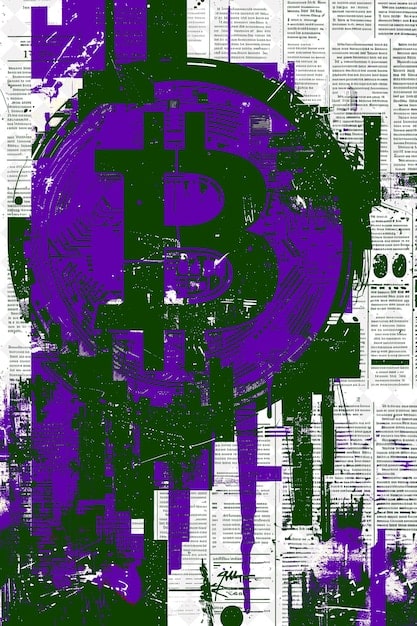Tokenized Journalism vs. Traditional Subscriptions: US Financial Analysis

Tokenized journalism presents an innovative alternative to traditional subscriptions for US news consumers, leveraging blockchain technology to offer new revenue models and engagement opportunities, although it faces challenges in mainstream adoption and technical complexity.
The media landscape is rapidly evolving, and with it, the ways consumers access and pay for news. Tokenized journalism vs. traditional subscriptions: A financial analysis for US news consumers explores the potential of blockchain-based models to disrupt traditional paywalls and subscriptions, offering both opportunities and challenges for readers and news organizations alike.
Understanding traditional news subscriptions in the US
Traditional news subscriptions have long been the backbone of revenue for news organizations. In the US, this model has evolved from print to digital, offering consumers access to news content for a recurring fee. However, this system faces challenges in the digital age, with many users hesitant to pay for online content.
The evolution of paywalls
Paywalls have become a common strategy for publishers to monetize their online content. These barriers restrict access to articles, requiring users to subscribe to gain full access. The effectiveness of paywalls varies, depending on the quality of the content, the pricing model, and the willingness of consumers to pay.
Financial burden on consumers
For US news consumers, subscribing to multiple news sources can quickly become expensive. A subscription to a major newspaper, combined with a few niche publications, can easily exceed the cost of other entertainment services. This financial burden can deter consumers from subscribing to multiple sources, limiting their access to diverse perspectives.
- Cost of multiple subscriptions adds up quickly.
- Limited access for casual readers.
- Paywalls can create information silos.
Many consumers are reluctant to pay for online news due to the perception that information should be free. The ubiquity of free content, often supported by advertising, has created a culture where paying for news is seen as optional. This mindset poses a significant challenge to the sustainability of traditional subscription models.

The rise of tokenized journalism
Tokenized journalism offers a novel approach to funding and distributing news content. By leveraging blockchain technology, it introduces new revenue models and engagement mechanisms that could potentially reshape the media landscape. This model aims to address some of the limitations of traditional subscriptions, offering more flexible and user-centric options.
How blockchain enables tokenization
Blockchain technology provides a secure and transparent platform for tokenizing news content. Each article or piece of content can be represented by a unique token, which can be bought, sold, or earned by users. This system allows for micropayments, rewarding creators directly for their work.
Benefits for news organizations
For news organizations, tokenized journalism offers several potential benefits. It can diversify revenue streams beyond traditional advertising and subscriptions, attracting a new audience of crypto-savvy consumers. It also allows for greater control over content distribution and ownership, reducing reliance on centralized platforms.
- Diversified revenue streams beyond subscriptions.
- Greater control over content distribution.
- Attraction of a new crypto-savvy audience.
Tokenized journalism can also foster a stronger relationship between journalists and their audience. By directly supporting the creators they value, readers become stakeholders in the success of the news organization. This creates a sense of community and loyalty, which is crucial for the long-term sustainability of independent journalism.
Financial incentives for US news consumers
Tokenized journalism presents several financial incentives for US news consumers. These incentives range from the ability to earn tokens by participating in the news ecosystem to accessing content through more flexible payment models. These features could make news consumption more affordable and engaging.
Micropayments for individual articles
One of the key financial advantages of tokenized journalism is the ability to pay for individual articles through micropayments. Instead of committing to a monthly subscription, users can purchase access to specific articles that interest them. This model is particularly appealing to casual readers who only consume news occasionally.
Earning tokens through engagement
Tokenized journalism platforms often reward users for their engagement with the news ecosystem. Users can earn tokens by commenting on articles, sharing content on social media, or participating in discussions. These tokens can then be used to access premium content or support their favorite journalists.

Reduced cost compared to subscriptions
For many consumers, tokenized journalism can be more cost-effective than traditional subscriptions. By paying only for the content they consume and earning tokens through engagement, users can significantly reduce their overall news spending. This model makes high-quality journalism more accessible to a wider audience.
Tokenized journalism introduces new ways for consumers to interact with and support news organizations financially. By offering micropayments and rewarding engagement, it creates a more flexible and user-centric model that could potentially replace traditional subscription models.
Challenges and limitations
Despite its potential, tokenized journalism faces several challenges and limitations in the US market. These challenges range from technical complexities to regulatory uncertainties and the need for widespread adoption by both news organizations and consumers.
Technical complexity for users
One of the main barriers to entry for tokenized journalism is the technical complexity involved. Users need to understand blockchain technology, set up digital wallets, and manage tokens. This can be daunting for those who are not tech-savvy, limiting the appeal of tokenized news platforms.
Regulatory uncertainty in the US
The regulatory landscape for cryptocurrencies and blockchain-based platforms is still evolving in the US. This uncertainty can create challenges for news organizations looking to implement tokenized models. The need to comply with various regulations and ensure legal compliance adds complexity and costs.
- Understanding blockchain concepts is essential.
- Setting up and managing digital wallets.
- Navigating the complexities of token economics.
Need for mainstream adoption
For tokenized journalism to succeed, it needs widespread adoption by both news organizations and consumers. This requires a shift in mindset and a willingness to experiment with new models. Overcoming inertia and convincing established players to embrace tokenization is a significant challenge.
Tokenized journalism needs to address issues such as scalability, transaction costs, and environmental concerns to become a viable alternative to traditional subscription models. By overcoming these hurdles, tokenized journalism can unlock its full potential and transform the way news is funded and consumed.
Case studies: successful tokenized journalism initiatives
Several initiatives have already begun to explore the potential of tokenized journalism. These case studies provide valuable insights into the practical applications of blockchain technology in the news industry and highlight both successes and challenges encountered.
Civil: decentralized news platform
Civil was an ambitious project that aimed to create a decentralized news platform where journalists could publish their work and be directly supported by their audience through tokens. While Civil faced challenges and ultimately shut down, it provided valuable lessons about the difficulties of building a decentralized news ecosystem.
Brave browser and Basic Attention Token (BAT)
The Brave browser allows users to support their favorite content creators through Basic Attention Tokens (BAT). Users can earn BAT by viewing privacy-respecting ads and then donate these tokens to websites and content creators they want to support. This model offers a new way to reward journalists directly for their work.
Mirror.xyz: crypto-native publishing
Mirror.xyz is a publishing platform built on blockchain that allows writers to tokenize their work and crowdfund their projects. This platform empowers journalists to retain ownership of their content and engage directly with their audience, fostering a more sustainable and independent media ecosystem.
These case studies demonstrate the potential of tokenized journalism to create new opportunities for journalists and consumers alike. While these projects have faced challenges, they provide valuable insights that can inform future initiatives in this space.
Future trends in tokenized journalism
The future of tokenized journalism looks promising, with several trends emerging that could reshape the media landscape. These trends include the integration of decentralized finance (DeFi), the rise of non-fungible tokens (NFTs) for news content, and the development of more user-friendly blockchain tools.
Integration with decentralized finance (DeFi)
The integration of tokenized journalism with DeFi platforms could create new opportunities for both news organizations and consumers. For example, journalists could earn interest on their token holdings, while consumers could stake their tokens to support their favorite news sources.
NFTs for exclusive content
Non-fungible tokens (NFTs) could be used to tokenize exclusive news content, such as investigative reports or in-depth interviews. These NFTs could be sold to collectors and enthusiasts, providing a new revenue stream for journalists and news organizations.
- NFTs offer unique and verifiable ownership.
- Create a marketplace for exclusive and rare content.
- Connect journalists directly with collectors.
User-friendly blockchain tools
The development of more user-friendly blockchain tools will be crucial for the widespread adoption of tokenized journalism. Simplified wallet interfaces, easier token management, and seamless integration with existing news platforms will make it easier for consumers to participate in the tokenized news ecosystem.
Tokenized journalism is poised to play an increasingly important role in the future of media. By embracing these trends and addressing the challenges, the news industry can create a more sustainable, independent, and user-centric ecosystem.
| Key Point | Brief Description |
|---|---|
| 💰 Micropayments | Pay per article instead of subscription. |
| 💎 Token Rewards | Earn tokens for engagement on platforms. |
| 🌐 Decentralization | Blockchain ensures content ownership and transparency. |
| 🔒 Security | Blockchain enhances content security and reduces censorship. |
Frequently asked questions
Tokenized journalism uses blockchain to create new revenue models for news, allowing readers to support journalists directly through tokens and micropayments, bypassing traditional subscription models.
Micropayments allow readers to pay a small amount for individual articles instead of a monthly subscription, making it more affordable for casual news consumers and providing flexible access.
News organizations can diversify revenue streams, gain more control over content distribution, and foster stronger relationships with their audience by providing new ways to financially interact.
Challenges include the technical complexity for users, regulatory uncertainty, and the need for mainstream adoption by both news organizations and consumers for viability.
Consumers can earn tokens by engaging with news platforms through commenting, sharing content on social media, or participating in discussions, contributing to the news ecosystem.
Conclusion
In conclusion, the landscape of news consumption is undergoing a transformative shift with the emergence of tokenized journalism. While traditional subscriptions have long been the standard, they come with limitations that can deter many US news consumers. Tokenized journalism offers an innovative and potentially more sustainable alternative by leveraging blockchain technology to introduce micropayments, token rewards, and decentralized content ownership. Although challenges such as technical complexity and regulatory uncertainty exist, the potential benefits for both news organizations and consumers make it a promising path towards a more accessible, equitable, and engaged news ecosystem.





